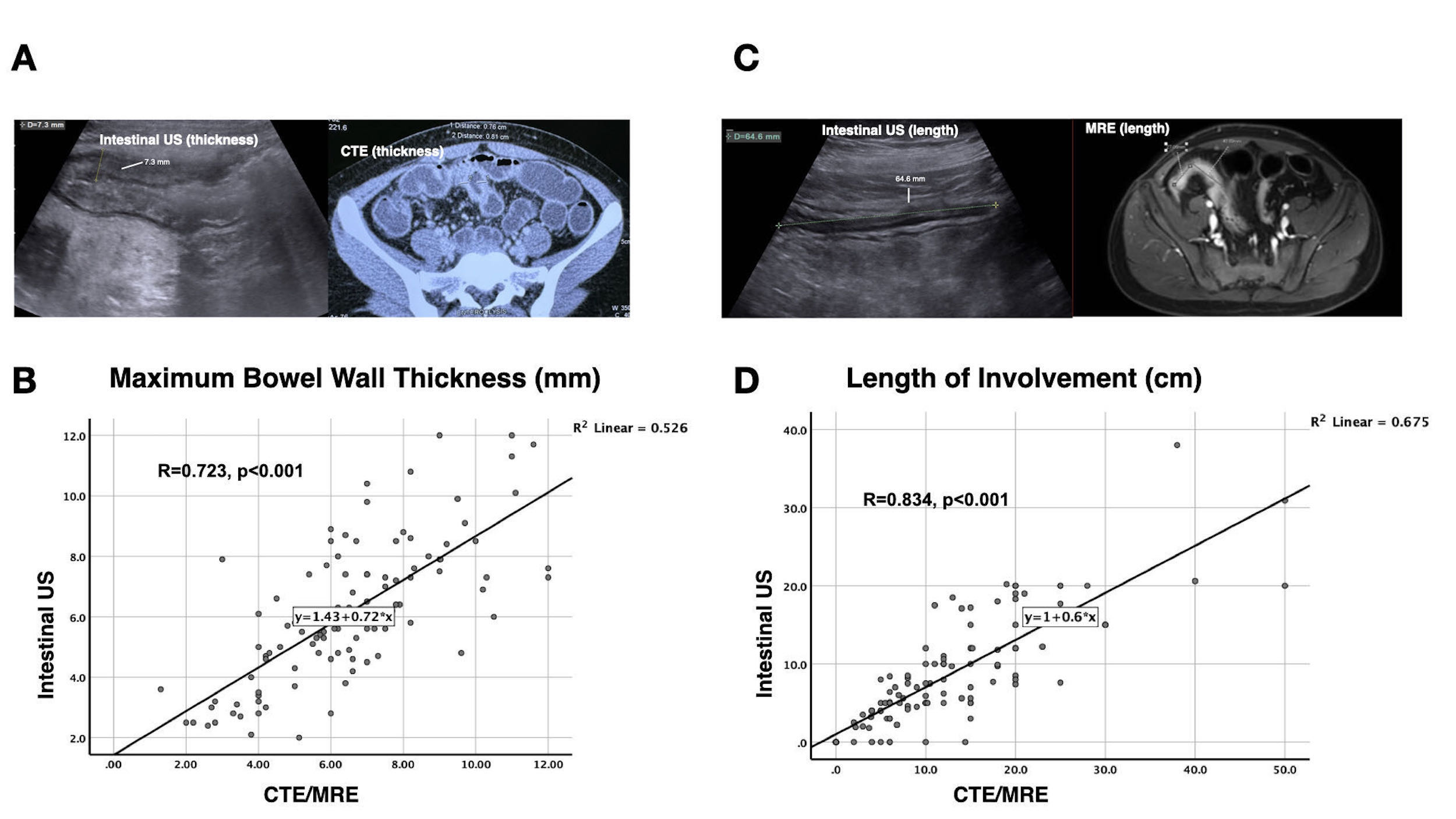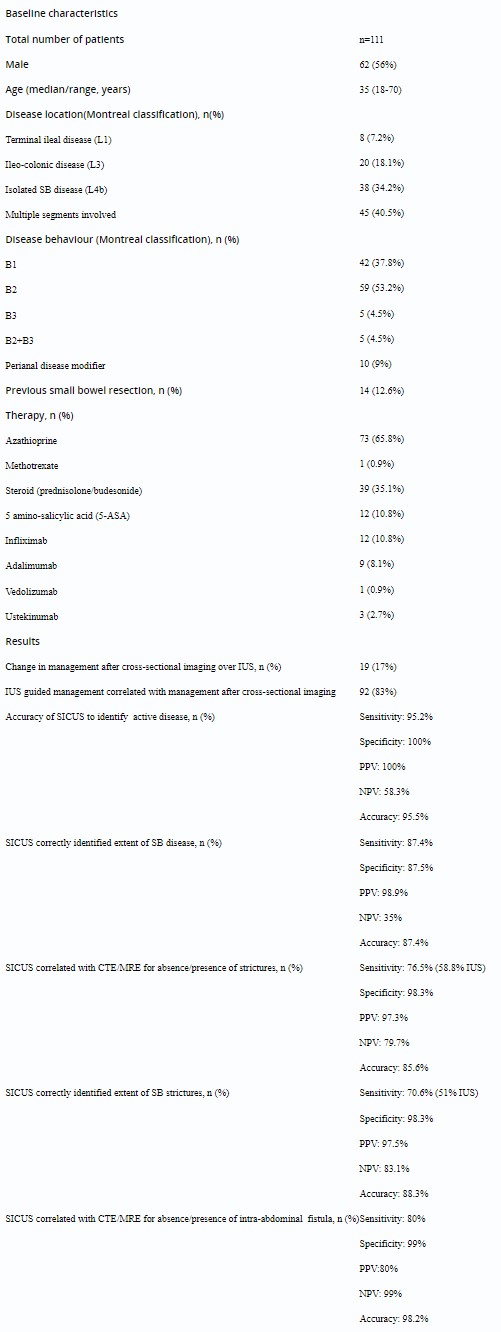Oral Paper Presentation
Annual Scientific Meeting
Session: Presidential Plenary Session 1
2 - Correlation and Assessment of Small Bowel Lesions Using Cross-Sectional Imaging Techniques vs Small Intestinal Contrast UltraSonography in Known Crohn’s Disease (CACTUS-CD Trial): A Paired, Validating Study (NCT06125678)
Monday, October 28, 2024
8:12 AM - 8:24 AM ET
Location: Terrace Ballroom

Partha Pal, MD (he/him/his)
Asian Institute of Gastroenterology
Hyderabad, Telangana, India
Presenting Author(s)
Award: ACG Outstanding Research Award in the IBD Category
Partha Pal, MD, Mohammed Abdul Mateen, , Kanapuram Pooja, PharmD, Uday Kumar Marri, MD, Rajesh Gupta, MD, DM, Manu Tandan, MD, DM, D Nageshwar Reddy, MD, DM, FACG
Asian Institute of Gastroenterology, Hyderabad, Telangana, India
Introduction: Magnetic resonance/computed tomography enterography (MRE/CTE) are established for assessing small bowel (SB) Crohn’s disease (CD) with superior accuracy compared to intestinal ultrasound (IUS). However, the role of small intestinal contrast ultrasound (SICUS) in monitoring CD activity needs further exploration.
Methods: This study evaluated SICUS in comparison to CTE/MRE for monitoring known SB CD activity. Patients (age 18-75) with established SB CD underwent SICUS prior to CTE (n=75)/MRE (n=39). Accuracy of SICUS for detecting SB disease presence, extent, maximum bowel wall thickness (BWT), length of involvement, and complications (strictures, fistulas), and its impact on management were assessed against MRE/CTE.
Results: A total of 111 patients (median age 35 years, 56% male) were included. SICUS showed sensitivity/specificity of 95.2%/100%, positive predictive value (PPV) of 100%, negative predictive value (NPV) of 58.3%, and accuracy of 95.5% for detecting SB disease. For disease extent, SICUS had sensitivity/specificity of 87.4%/87.5%, PPV 98.9%, NPV 35%, and accuracy 87.4%. Sensitivity/specificity for detecting strictures were 76.5% (58.8% with IUS alone)/98.3%, PPV 97.5%, NPV 83.1%, and accuracy 88.3%; for fistulas, 80%/99%, PPV 80%, NPV 99%, and accuracy 98.2%. SICUS correlated strongly with cross-sectional imaging for BWT (Spearman’s R=0.723, p< 0.001) and length of involvement (R=0.834, p< 0.001). Missed lesions were primarily in proximal and mid SB. Overall, management changed in 17% (n=19) after CTE/MRE.
Discussion: SICUS accurately identifies SB CD activity, extent, and complications, with limited impact on management decisions compared to cross-sectional imaging. It is particularly beneficial for detecting SB strictures. Cross-sectional imaging remains valuable for proximal and mid SB involvement. (Clinicaltrials.gov: NCT06125678).


Disclosures:
Partha Pal, MD, Mohammed Abdul Mateen, , Kanapuram Pooja, PharmD, Uday Kumar Marri, MD, Rajesh Gupta, MD, DM, Manu Tandan, MD, DM, D Nageshwar Reddy, MD, DM, FACG, 2, Correlation and Assessment of Small Bowel Lesions Using Cross-Sectional Imaging Techniques vs Small Intestinal Contrast UltraSonography in Known Crohn’s Disease (CACTUS-CD Trial): A Paired, Validating Study (NCT06125678), ACG 2024 Annual Scientific Meeting Abstracts. Philadelphia, PA: American College of Gastroenterology.
Partha Pal, MD, Mohammed Abdul Mateen, , Kanapuram Pooja, PharmD, Uday Kumar Marri, MD, Rajesh Gupta, MD, DM, Manu Tandan, MD, DM, D Nageshwar Reddy, MD, DM, FACG
Asian Institute of Gastroenterology, Hyderabad, Telangana, India
Introduction: Magnetic resonance/computed tomography enterography (MRE/CTE) are established for assessing small bowel (SB) Crohn’s disease (CD) with superior accuracy compared to intestinal ultrasound (IUS). However, the role of small intestinal contrast ultrasound (SICUS) in monitoring CD activity needs further exploration.
Methods: This study evaluated SICUS in comparison to CTE/MRE for monitoring known SB CD activity. Patients (age 18-75) with established SB CD underwent SICUS prior to CTE (n=75)/MRE (n=39). Accuracy of SICUS for detecting SB disease presence, extent, maximum bowel wall thickness (BWT), length of involvement, and complications (strictures, fistulas), and its impact on management were assessed against MRE/CTE.
Results: A total of 111 patients (median age 35 years, 56% male) were included. SICUS showed sensitivity/specificity of 95.2%/100%, positive predictive value (PPV) of 100%, negative predictive value (NPV) of 58.3%, and accuracy of 95.5% for detecting SB disease. For disease extent, SICUS had sensitivity/specificity of 87.4%/87.5%, PPV 98.9%, NPV 35%, and accuracy 87.4%. Sensitivity/specificity for detecting strictures were 76.5% (58.8% with IUS alone)/98.3%, PPV 97.5%, NPV 83.1%, and accuracy 88.3%; for fistulas, 80%/99%, PPV 80%, NPV 99%, and accuracy 98.2%. SICUS correlated strongly with cross-sectional imaging for BWT (Spearman’s R=0.723, p< 0.001) and length of involvement (R=0.834, p< 0.001). Missed lesions were primarily in proximal and mid SB. Overall, management changed in 17% (n=19) after CTE/MRE.
Discussion: SICUS accurately identifies SB CD activity, extent, and complications, with limited impact on management decisions compared to cross-sectional imaging. It is particularly beneficial for detecting SB strictures. Cross-sectional imaging remains valuable for proximal and mid SB involvement. (Clinicaltrials.gov: NCT06125678).

Figure: Correlation of cross sectional imaging (CTE-computed tomography enterography/MRE: magnetic resonance enterography) with intestinal ultrasound : maximum bowel wall thickness measurement (A) and correlation (B); length of involvement (C) and correlation (D)

Table: Baseline characteristics and key results of the study
Disclosures:
Partha Pal indicated no relevant financial relationships.
Mohammed Abdul Mateen indicated no relevant financial relationships.
Kanapuram Pooja indicated no relevant financial relationships.
Uday Kumar Marri indicated no relevant financial relationships.
Rajesh Gupta indicated no relevant financial relationships.
Manu Tandan indicated no relevant financial relationships.
D Nageshwar Reddy indicated no relevant financial relationships.
Partha Pal, MD, Mohammed Abdul Mateen, , Kanapuram Pooja, PharmD, Uday Kumar Marri, MD, Rajesh Gupta, MD, DM, Manu Tandan, MD, DM, D Nageshwar Reddy, MD, DM, FACG, 2, Correlation and Assessment of Small Bowel Lesions Using Cross-Sectional Imaging Techniques vs Small Intestinal Contrast UltraSonography in Known Crohn’s Disease (CACTUS-CD Trial): A Paired, Validating Study (NCT06125678), ACG 2024 Annual Scientific Meeting Abstracts. Philadelphia, PA: American College of Gastroenterology.



